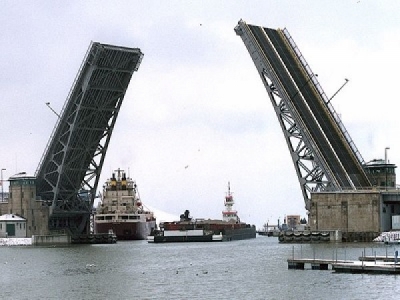
Posted on December 13, 2018
The environmental recovery of the Black River and the Port of Lorain has received another shot of funds to help bankroll a new restoration project.
On Dec. 3, the Ohio State Controlling Board released $9.9 million requested by the Department of Natural Resources for three Lake Erie port cities. The grants included $4 million to Lorain for the construction of a facility designed to recycle the equivalent of 13,000 dump truck loads of sediment dredged from the river and the harbor each year.
The Black River Dredge Reuse Facility will be located on a 30-acre site on the south bank of the river, about two miles from its mouth on Lake Erie.
The project is expected to become operational by 2020, when a new Ohio law takes effect that will end the U.S. Army Corps of Engineers’ practice of open-lake dumping of 1.5 million tons per year of sediment dredged from seven harbors on the lake’s southern shore.
Army Corps Chief of Public Affairs Andrew Kornacki said his agency has been working with the Ohio EPA and the different port authorities to devise plans for meeting the requirements of the new law.
“We’re more than willing to continue to work with them and to assist them in their beneficial use plans for all of the harbors,” Kornacki said.
The Black River facility will be located adjacent to a large industrial brownfield where an estimated 30 years’ worth of dredged sediment, previously determined to be clean enough for open-lake disposal, could be applied to cap the polluted soil.
The Black River reuse project comes after $35 million has already been spent on environmental projects in the region. The most recent was in 2015 when $15 million in Great Lakes Restoration Initiative funds were spent to remove 24 acres of contaminated sediment from the Black River floodplain, the legacy of decades of steelmaking and shipbuilding operations on the land.
Other beneficiaries of the Healthy Lake Erie Initiative funds include the Toledo-Lucas County Port Authority, which will spend $1.9 million to upgrade its confined disposal dike, raising its capacity to contain up to 1 million more cubic yards of dredged sediment per year for the next 6 to 10 years.
The city of Conneaut in Ashtabula County received $4 million to construct the Conneaut Creek Dredge Material Facility, which will accept up to 75,000 cubic yards of dredged sediment from the Conneaut Harbor. This facility is designed to process the sediment, blend it with soil and produce potential new uses for the material, such as capping a brownfield site located adjacent to the facility.
In Fairport Harbor, the Lake County Port Authority has not yet committed to a dredged soil reuse plan, but port officials have ideas they believe will work and cost far less than the Lorain project.
“Our material is already pretty clean, coming out of the Grand River,” said Peter Zahirsky, director of Coastal Development for the port authority.
Potential reuse plans include beach nourishment and shoreline habitat restoration projects, Zahirsky said. The Lake County port is working with the Ohio EPA to identify a landscaping company willing to form a private-public partnership for a beneficial reuse deal, he said.
If the other ports are looking for ways to reuse dredged sediment they need only to observe the Port of Cleveland’s operation, which has recycled an average of 140,000 to 160,000 cubic yards of sediment for the past five years, said vice president Jade Davis.
The Port of Cleveland teamed with the Kurtz Brothers landscaping company to build and operate a machine called a bed load interceptor on the Cuyahoga River, which captures and removes tons of sediment from the shipping channel, decreasing the need for dredging downstream by 10-15 percent.
Kurtz Brothers also is mining thousands of tons of sediment from the Port of Cleveland’s dredge sediment containment dikes near Burke Lakefront Airport. The company cleans and dewaters the sediment, mixes the soil with clean aggregates, trucks the material off the dike and sells it for use in construction and landscaping projects, as well as using some for its own endeavors.
The projects have extended the life of the port’s containment dikes by 30 years, saving the need to spend $150 million to build a new storage dike.
The Ohio EPA has determined that the sediment dredged from the Cuyahoga River is too polluted with PCBs to be dumped directly into Lake Erie, thus the need for containment dikes since the passage of the federal Clean Water Act in 1972.
The Army Corps of Engineers is overseeing several other Lake Erie projects in the coming months, including $4.3 million to repair the damaged breakwater that protects Lorain Harbor. An additional $3.5 million will be spent to repair Cleveland’s breakwater next year, Kornacki said.
“These investments are an important step toward modernizing our Great Lakes ports and waterway infrastructure,” said U.S. Rep. Marcy Kaptur, Democrat from Toledo, and the ranking member of the Appropriations Subcommittee on Energy and Water.
“Northern Ohio and our region are the agriculture and industrial center of the United States,” Kaptur said. “These investments in critical infrastructure will fortify our commitment to creating good jobs and strengthening commerce across our heartland.”
Source: cleveland.com





